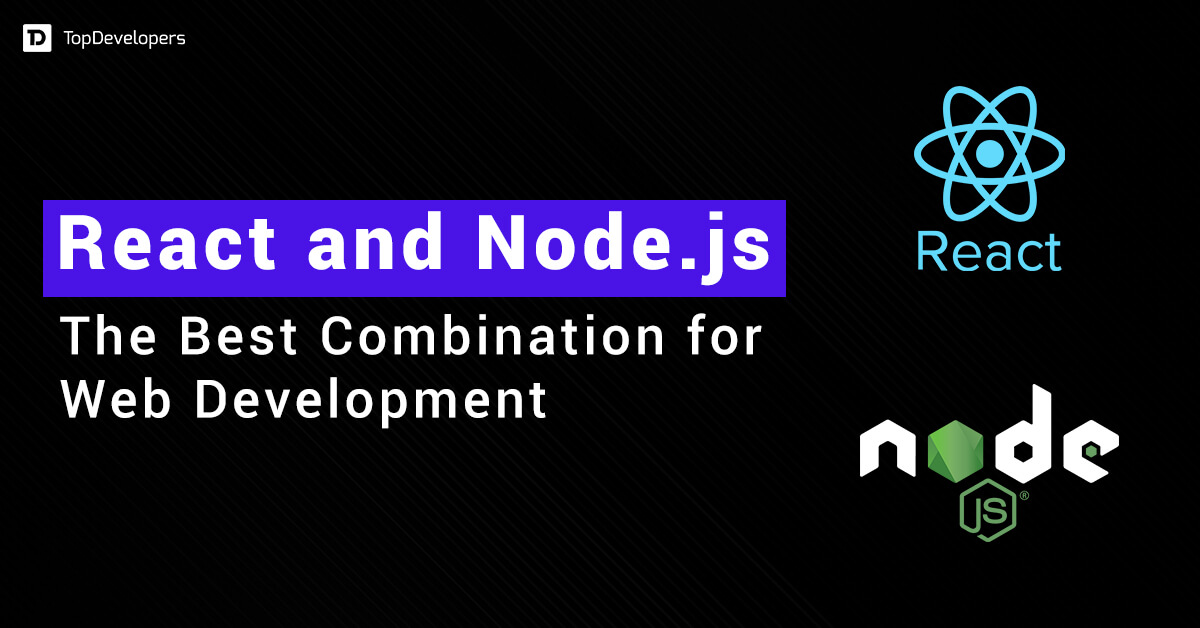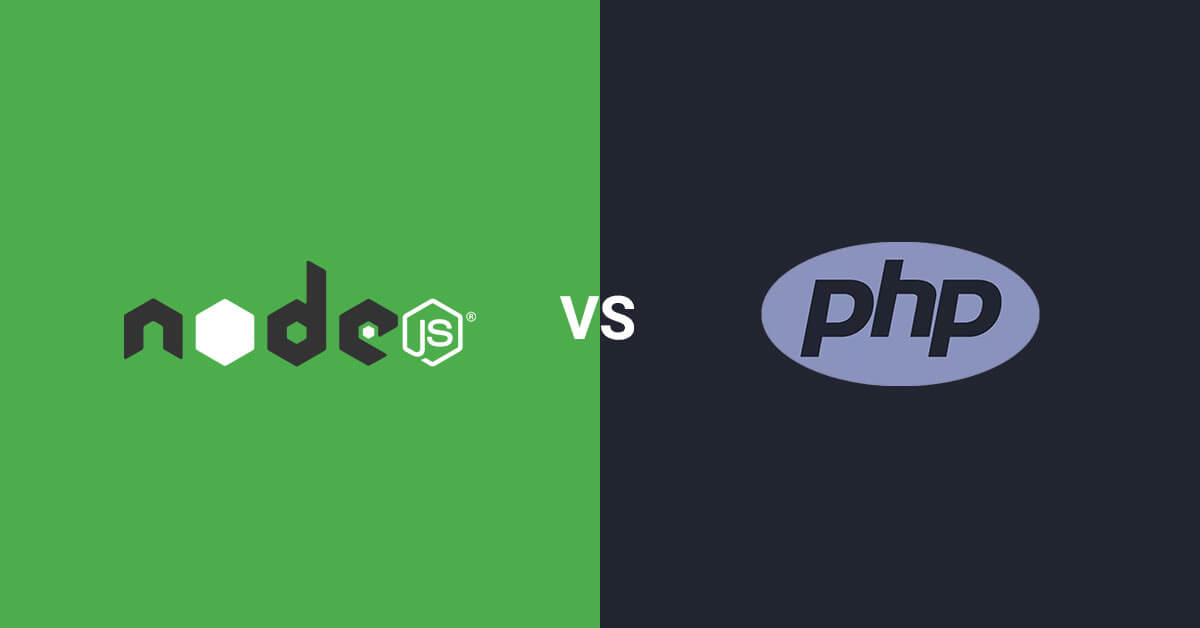
A decade back when Ryan Dahl had written Node.js to build a solution that resolves the speed, concurrency, scalability, reliability, and data sharing issues, which frequently pop up in front of the developers, he was entirely clueless about the popularity and the enormous success the piece of software will relish at the later stage. Even, the stack overflow’s developer survey has crowned the language as the most commonly used back-end technology in the IT world.
Now, the open-source platform built on the top of Chrome’s V8 JavaScript engine powering nearly 0.49% of the websites on the webbed world with 280,811 unique websites is steadily moving up in terms of high usage and not showing any sign of losing the battle to contemporary frameworks.
In the last few years, Node.js’ package ecosystem, NPM, boasts of having the largest ecosystem of open-source libraries in the world with millions of packages. The increasing community support, universal development ecosystem, and high familiarity with JavaScript language are other reasons for using Node.JS for web development.
The unmatched performance, high scalability, real-time application development, single codebase, data streaming services, and event-driven, non-blocking I/O model have compelled large enterprises SMBs to build or re-engineer websites and applications using Node.js technology. Netflix, Uber, PayPal, and Walmart are names to few.
These are enough reasons for the developers to learn or polish their skills in Node.js in order to get their dream job in Top Node.js development companies. The JavaScript framework has made the lives of Node.js developers easier with an array of Node.js development tools.
Table of Contents
What is Node.JS?
Node.JS is a lightweight server-side JavaScript platform that’s built on top of Google’s Chrome V8 JS engine. JavaScript and Typescript– both coding languages are used to build Node.JS applications.
Node.JS web app leverages an event-driven, non-blocking I/O model that makes it a good fit for building real-time, high-performance applications. It’s the reason the platform is leveraged by leading brands such as Twitter, eBay, PayPal, Netflix, Aliexpress, and others.
The low learning curve and huge community support make it easy for rookie programmers to quickly master and start building modern applications using Node.JS. The high extensibility and scalability enable talented developers to meet the custom requirements of business projects. This is why Node.JS web development is becoming a go-to choice for businesses.
What are Node.js Development Tools?
Since 2009, Node.JS has scored high popularity with continuous upgrades and now the JS framework stands in a good position that from startups to enterprises prefer the framework over other JS frameworks. However, Node.JS development is not a plain sailing journey for the developers. That’s where Node.JS development tools come to the rescue.
Tools for Node.JS development is a complete package that includes libraries, frameworks, and tools that make development, designing, testing, and deployment easier. Node.js developers leverage the tools based on the project’s needs.
Benefits of Leveraging Node.js Development Tools
There are pros and cons to every technology. Node.JS is no exception. Here, we will explore the advantages of Node.JS to know when and where it matches your business needs and allows you to make the right choice.
- The single-threaded, event-driven architecture enables the web app to process multiple concurrent requests at speed without clogging RAM, which results in building real-time applications that render high performance.
- Cluster module, load balancing, non-blocking event-loop mechanism, and microservice leverage enable the building of scalable apps.
- Node.JS developers can write code for both front-end and back-end using the same JavaScript language, which eliminates the need to hire more resources for website and app development. It makes full-stack JS development cost-effective.
- Active contribution from a large number of experienced Node.js development experts helps novice developers to get assistance whenever required.
- JavaScript (JS) is the universal programming language that’s easier to learn, which makes it easy for Node.JS developers to write code in reduced time.
- The full-stack capability of the Node.JS enables the cross-functional team to focus on the development lifecycle and address challenges immediately.
- Lightweight Node.JS helps to accelerate development speed with the same JS usage for client-side and server-side development.
- Built-in API leverage for Node.JS development enables building HTTP and DNS servers and JSON that streamline data sharing between web and client-server. This allows for meeting custom requirements of business projects.
- Caching module minimizes task workload and code re-execution which results in loading the page in a fraction of a second.
Top Most Node.JS Development Tools [2023]
Node Version Manager (NVM)
Node Version Manager (NVM) is a command-line utility that provides an easy way to install, manage, and switch between different versions of Node.JS. This is important because different projects might have different requirements for Node.JS versions, and NVM helps avoid conflicts and ensure compatibility. It helps Node.JS developers escape from the hassle of manually downloading and installing specific Node.JS versions for different projects.
NVM also manages the npm version that corresponds to the currently selected Node.JS version. It can be installed on Unix-based systems (Linux, macOS) using a simple script, and installation instructions that are available on the official GitHub repository.
Mongoose
Mongoose simplifies the process of working with MongoDB by providing an abstraction layer. It allows Node.JS programmers to interact with the database using JavaScript objects rather than raw MongoDB queries. It facilitates defining data schema for MongoDB collections and creating models that provide an interface for interacting with the database. Schema and model together enable the performing of CRUD operations.
It provides a chainable query builder API that allows the construction of complex queries in a more readable and structured manner. Additionally, existing plugins are used or new plugins are created to add functionality to models, making it easier to reuse code across different projects.
Sequelize
Sequelize is a popular Object-Relational Mapping (ORM) library for Node.JS. It is useful when working with relational databases, as it abstracts away the complexities of SQL queries and allows working with databases using object-oriented principles. It allows establishing a connection to the database using Sequelize’s sequelize object, which is used throughout the application to interact with the database.
Developers of Node.JS can also define relationships between models, such as one-to-one, one-to-many, and many-to-many associations. These associations simplify querying related data and ensure data integrity. Sequelize supports database migration that helps manage changes to database schema over time.
Gulp
Gulp is a well-known task runner and build automation tool in the Node.JS ecosystem. It simplifies the process of performing various tasks in the development workflow. Instead of manually running scripts or commands for each task, Gulp allows defining and organizing these tasks in a more structured and automated manner.
Tasks, including compiling Sass to CSS, minifying JavaScript files, optimizing images, or running tests are automated using Node.JS. As Gulp operates on streams, it can process files as they’re read and written directly to an output. There’s a watch mode that monitors specified files for changes and thereafter associated task is executed automatically.
ESlint
ESLint is a static code analysis tool that examines Node.JS code for potential errors, style violations, and code smells. It enforces a set of rules that are configured to match preferred coding styles and best practices. Node.JS developers can do it by choosing from a wide range of pre-defined rules and even creating their own custom rules.
It seamlessly integrates with popular code editors and Integrated Development Environments (IDEs) like Visual Studio Code. It provides real-time feedback and suggestions while writing code. The rich ecosystem of plugins extends its capabilities and provides rules for specific libraries, frameworks, or coding standards.
ESLint integrated with a continuous integration (CI) pipeline to automatically check the codebase whenever changes are pushed, ensuring that the codebase remains clean and maintainable.
Axios
Axios is known for its simplicity and ease of use when it comes to making HTTP requests in Node.JS. It provides methods for making various types of HTTP requests, such as GET, POST, PUT, DELETE, and more. These methods are easy to use and provide a straightforward way to interact with web services.
Using Promises, asynchronous operations are easily handled with async/await or traditional Promise chaining. This simplifies dealing with asynchronous tasks like making API requests. With error handling mechanisms, Axios allows for catching and handling errors that occur during the request process.
By defining request and response interceptors, global requests or responses are manipulated before they are sent or processed. Axios is also used to interact with RESTful APIs, GraphQL APIs, and other web services. It can handle authentication, sending data in requests, and receiving data in responses.
Bluebird.js
It’s a full-featured JS library that enables building and delivering unmatched performant applications. The tool makes writing the Node.JS applications accessible as using node modules asynchronously becomes possible.
There’s a concept- ‘Promisify’ that’s leveraged for the callback function to make sure every call to the callback function returns some value. This way, all functions under the node module umbrella get automatically changed and return some value when the node modules are ‘Promisified’.
Electrode.JS
Electrode.JS is a versatile platform on which Node.JS programs run. being a standardized framework using the latest technologies, Electrode.JS enables Node.js developers to view module trees, documentation, and more. It’s more focused on building high-performance web applications with component reusability and easy deployment. It enables Node.js experts to build unique applications.
Mocha.js
Experienced Node.JS engineers leverage the testing framework at scale to make asynchronous testing simple. The JS test framework runs simultaneously on Node.JS and in the browser. It facilitates running multiple Node.JS tests in parallel, test coverage reporting, global variable leak detection, config file support, and a lot more. The testing tool is used for unit testing and integration testing of the Node.JS applications.
Webstorm IDE
The IDE for JS framework makes development a breeze with routine work automation and complex task handling. Node.JS development tool enables writing reliable and maintainable code as it detects potential problems instantly. Plus, the entire codebase is refactoring in a few clicks without missing anything during huge structural changes. Debugging and testing Node.JS with WebStorm IDE is a plain sailing journey.
Express.js
Express is a server-side framework that’s written in JavaScript language and is considered a perfect fit to build a single page, multiple pages, hybrid apps, common back-end functions, and APIs. It supports MVC architecture and has two templating engines that handle the data flow.
Going ahead, it offers a mechanism to add additional request processing “middleware” in the request handling chain at any point which provides flexibility to the Node.JS experts to create compatible middleware packages that address the development problems.
However, the flexibility to add middleware packages at any point works as a double-edged sword because there is no right way to use middleware packages and structure an app in one file, multiple files, or any directory structure.
This is why the framework is also termed as an unopinionated and minimalist framework. Using Express-generator, the project folder structure can be generated so that the Nodejs developers can directly jump into coding.
The thin layer on the top of Node.JS with web application features like- middleware, routing, static files serving, and templating, the I/O performance of the Node.JS app remains high.
Besides, Express provides methods to determine what function is called for a specific HTTP verb and URL pattern, what template engine is used, where template files are located, and which template to use to get a response. The middleware packages and HTTP utility methods enable the creation of APIs on-the-fly.
Socket.io
When it comes to building a highly interactive real-time chat application using Node.JS, the socket.io framework provides great help by enabling the bi-directional synchronous exchange of data in real time. The plain single argument events allow easy integration with any reactive streaming technology and the use of causal ordering-based tracking of events.
Plus, socket.io is all-browser compatible, platform-independent, and work and perform on every device flawlessly. The real-time engine also features real-time analytics (Display the data in charts, logs, or real-time counters), instant messaging and chat (Create a simple app in a few lines of code), binary streaming (Enable text, image, audio, or video sharing), and document collaboration (Allow multiple users to concurrently make and view the changes), which has made it very popular and worth that it’s used by Trello, Zendesk, Microsoft Office, and many other popular organizations.
Meteor
The full-stack framework is an excellent choice for developing reactive web and mobile applications. The support for MVC design principle makes it easier for the Node.JS developers to build an app keeping UI and business logic layers different, and thereby deliver the real-time update to the users without making extra trips to the web server.
With a bi-directional data synchronization mechanism, the shadow copy of the data requested by the client from the server is saved and when any changes are made, they are automatically saved to the server without any manual intervention.
The high-performing and complex applications can be built quickly due to the abundance of scaffolding options, libraries, and packages. With velocity testing tools, the code testing starts as soon as it’s written, and the green or red dots indicate the testing results.
The framework supported by the active community is continuously evolving with new libraries, packages, and tools to meet emerging app development trends.
Keystone.js
Leveraging CMS to build complex web applications saves a lot of development time and effort as the readymade plugins don’t require Node.js developers to code from scratch for building and deploying functionalities. Keystone is a CMS that helps in building data-driven applications that interact with a database without considering the PHP or WordPress platform.
Basically, Keystone.js is based on Express.js and MongoDB where the developers just require to set up the MVC architecture post-vanilla-installation. The data models in CMS automatically create an admin dashboard to manage the data. The complete control over the system from the inside out enables customization on-the-fly. The easy integration of packages makes the CMS extendable.
When you hire developers, the readymade templates and high degree of customization makes- building blogs or eCommerce- a matter of hours.
The Node.js development tool comes ready with session management and authentication features that take heavy work off the developer’s shoulders. Compatibility with third-party services is an add-on to craft out-of-box applications. This makes Keystone the best fit for building full-fledged, high-performing, and dynamic web applications under tight deadlines.
Koa.js
The team behind the Express.js framework has created Koa.js to minimize the minimalism characteristic of Express not by bundling any middleware in Koa’s core, but by creating separate modules for different features that can be added when required. This is why the core Koa module is just about 2K lines of code thereby reducing the download footprint.
With the use of context object ctx, the Node developer’s experience of writing middleware routines turned upside down. The code written using async/await in koa is short, expressive, easy to read, and easy to maintain. Koa has a slight edge over the Express.js framework when it comes to performance. It can be extended with more functionalities by using plugins and middleware. The generator’s integration makes it good at error handling.
Plus, the need for writing additional code for streaming and closing a file is eliminated as Koa.js directly passes the file instead of streaming it.
Sail.js
The popular MVC framework emulating the MVC pattern of the Ruby On Rails framework provides support for multiple databases (Bundled with powerful ORM and Waterline), and WebSockets to build data-intensive, real-time chat applications. It auto-generates the code for models, controllers, and routes that can be customized later to best suit business-specific needs.
The CSRF and Lusca compatibility makes the app robust and secure with various security layers. The great compatibility with the plethora of front-end frameworks. The intermediate automation degree such as auto-generation of REST APIs enables Node.JS developers to focus on the server-side logic and jumpstart the backend without writing extra lines of code, which speed up the development and ensure scalability with no performance glitches.
PM2
To manage Node.JS apps on the production server, there is a need for a tool that resolves the technical challenges and deploys the app efficiently. That’s where the PM2 development tool comes in handy.
PM2 is an open-source, Node.js process manager that helps developers manage applications in the production environment in the best way through handling node processes and errors, automatic load balancing, deployment system and monitoring, and declarative app configuration.
Besides, PM2 monitor unhandled exception such as unexpected errors, exceptions, and crashes, and when they occur, it reloads the node process and sends an email or alert when the process gets killed or restarted. The cluster mode increases the app performance by starting instances and then automatically balancing the load between each instance. It facilitates the automated deployment where the developers are just required to configure an app in a file and the rest is taken care of by PM2.
The built-in load balancer makes scaling the web application a piece of cake. Using Node.JS development tools like PM2, the updates can be made to the application in real-time by reloading the processes with zero downtime. In this way, PM2 takes off the massive overhead of keeping the web app up and alive forever.
Babel
During front-end development, it’s an expensive option for the developers to write code for ES6 or ES7, and all the older versions that run on the browsers and devices. Still, most of the devices and browsers support versions ES5 or older which makes it impossible to ignore the old version compatibility. It creates the need for a transpiler that allows the developers to write code according to the conventions of the latest version and then automatically transpile the JavaScript code to backward-compatible versions of the JavaScript.
There are many transpilers out there, but Babel transpiler is the most preferred because it’s closest to vanilla JavaScript, reduces the size of code, is highly compatible with most browsers, support map to easily debug the code and last, eliminates the worry about errors due to incompatibility.
In the latest upgrade, Babel 7, the transpiler is packed with performance booster features, configuration overrides, JavaScript configurations, options for size minification, automatic poly filling, caller metadata, and support for TypeScript and React JSX’s Fragments, which makes it worth using during Node.js application development.
Broccoli
When the app is developed using Grunt, and any file is changed in a build a few months later, the app takes over ten seconds to load after refreshing the browser. The double-digit delay is intolerable and impacting the developer’s productivity. To reduce the rebuild times, Broccoli- the grunt plugin is introduced that delivers less than 0.5 seconds of rebuild time and simplifies the build scripts.
The Node js developers just need to run the tasks in Grunt and then Broccoli creates the build in a quick and straightforward way.
Basically, Broccoli is a tree that doesn’t pass around file system directories, which makes it a breeze for the n:1 compiler to deal with tree pun. By not going partial rebuild creation way, it creates a fresh build every time and allows the plugins to cache the output so that the majority of the build is returned by the plugin from the cache.
The build tool is backend-agnostic and provides support for constant-time rebuilds and compact build definitions. The fast and reliable asset pipeline based on ES6 module works wonders in app development.
Webpack
Presently, for app development, dozens of scripts are written, each with a different purpose and requirements, and they further have dependencies. The developers have to load the scripts in the right order, but the asynchronous nature of JavaScript tries to load every script at once by default, which multiplies the problem by manifolds. This is why the community has created modules to bundle the scripts in a package, but slow-to-evolve JavaScript made it difficult to push things out of the door. There the module loader such as Webpack comes to the rescue.
Webpack is a build tool that’s passed through JavaScript to determine load priority, dependencies, paths, efficiencies, and so on without any overheads. It’s incredibly useful in large applications with complex front-end due to fewer static assets, easy code splitting, dead asset elimination, stable production deploys, and complete control over asset processing.
Select the Ideal Node.js Development Tools
The importance of Technology Stacks for Software Development cannot be underestimated as it can make or break the project’s success. There’s one technology- Node.js taking the web, mobile app, and software development space by storm.
Investing in Node.js development is a good choice for now and in the years to come because the technology is in demand and ranks pretty high. When you are ready to avail the overwhelming success of the Node.JS development framework, the myriad of development tools is there to help you.
Now that you have a basic introduction to the Node.JS development tools, you might think about hiring Node.js developers from the list of companies offering the best-in-class services to develop a foolproof business solution. If you have any trouble finding the right one check out the list of Node.JS developers at TopDevelopers.co or consult with them to make the right decision yourself.
Frequently Asked Questions Node.js Development Tools
What is Node.js good for?
Node.JS is good for its capability of building data-intensive, real-time applications that can handle a large number of connections while running across distributed devices.
Which development tool is installed with Node.js?
Meteor.JS, Express.JS, Keystone.JS, PM2, Babel, and more development tools are installed with Node.JS that makes development a breeze.
 Avantika Shergil
| Sep 6, 2023
Avantika Shergil
| Sep 6, 2023
Avantika Shergil is a technology enthusiast and thought leader with deep expertise in software development and web technologies. With over 8 years of experience analyzing and evaluating cutting-edge digital solutions, Avantika has a knack for demystifying complex tech trends. Her insights into modern programming frameworks, system architecture, and web innovation have empowered businesses to make informed decisions in the ever-evolving tech landscape. Avantika is passionate about bridging the gap between technology and business strategy, helping businesses build customized software and website, and understand about different tools to leverage effectively for their ventures. Explore her work for a unique perspective on the future of digital innovation.






